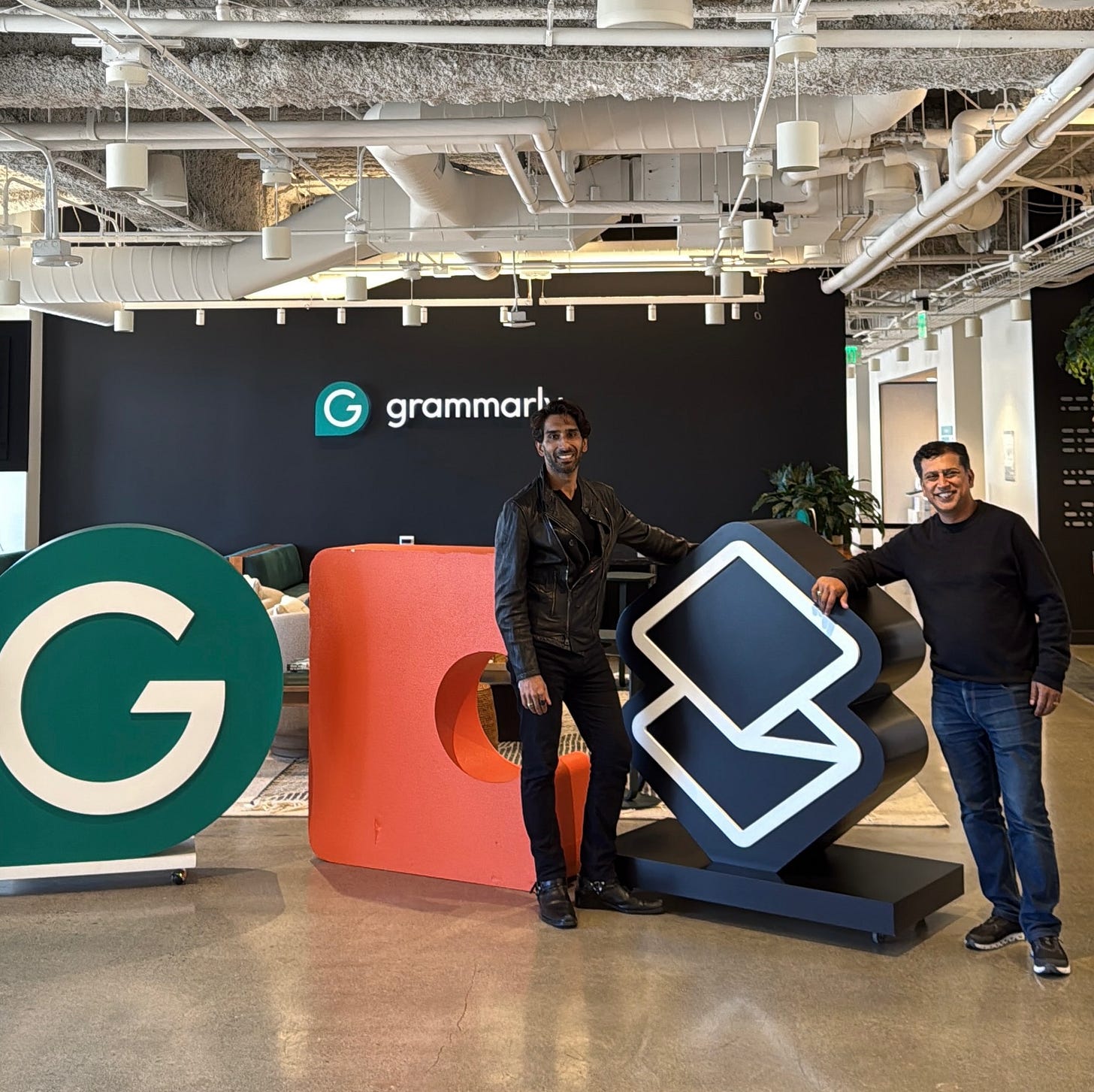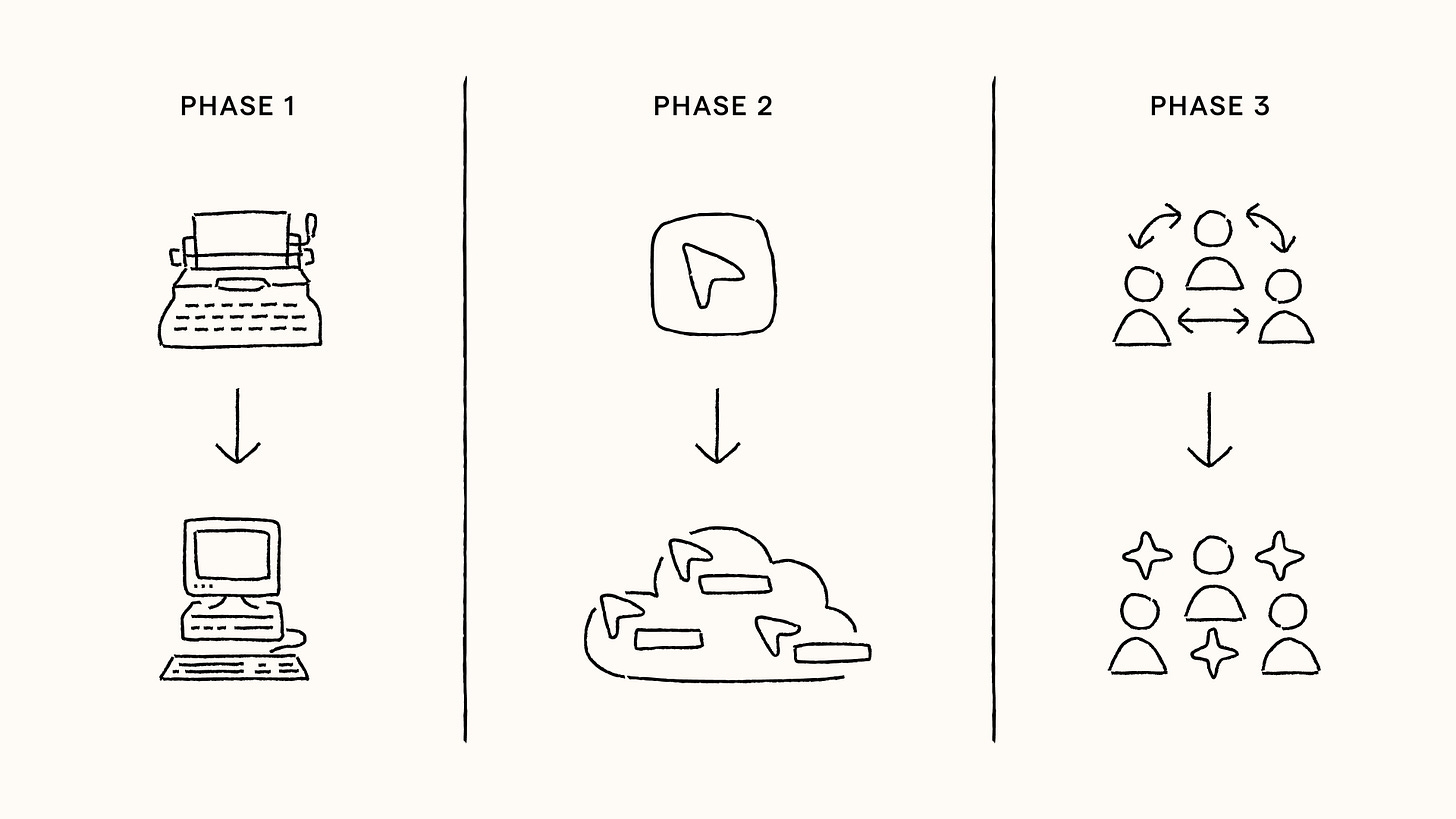On practical AI adoption
Over the past few months, I’ve been having some incredible conversations with our customers, other CEOs, and my team about what practical AI adoption looks like. There’s a shared consensus forming around how this new tech should serve people, and what we can do to get from the current state → most ideal future state.
I recently hosted a dinner with a group of customers in New York to talk about something I think about a lot: the rituals that shape how teams work. The conversation spanned from daily journaling and AI email triage to new formats for hackathons. But each example was grounded in the same goal of working smarter, moving faster, and staying aligned.
Coda and Grammarly came up often, as systems that help codify these rituals and scale what works. There was real energy around agentic AI, not just as a trend, but as a way to fundamentally redesign work. It’s exciting to see teams rethinking their rituals around AI!
And we’ve had customers share some exciting recent outcomes they saw with Grammarly:
Smartsheet drove a 283% ROI by using Grammarly, and saved their employees ~1,600 hours annually—time that they reinvested in higher-value, revenue-generating activities.
Western Governors University, the largest university in the nation by enrollment, rolled out Grammarly to ~70% of its institution (across students, employees, and Academy members). At WGU’s massive scale, the impact is remarkable: roughly 146,000 hours saved and $2.5M in annual savings!
On a related note, ICYMI, we just achieved a major milestone in our journey: Grammarly has acquired Superhuman, the AI-native email product that’s long been one of my personal favorites. This move is a meaningful step toward our vision of a unified productivity suite, where apps act as intelligent agents working alongside users to get things done. I’m thrilled to welcome Rahul Vohra and the Superhuman team to Grammarly.
We’ll have a lot more to share soon about the next generation of our AI. The possibilities ahead are big, and we’re just getting started! Check out the fun video Rahul and I made announcing the deal close. :)
Ritual of the month
As teams are deep into quarterly planning, establishing a framework for decision-making is essential. One basic but effective ritual is what I like to call Big Rocks. The core idea is simple: If you’re trying to fill a jar, you put the big rocks in first. Then there’s plenty of room for pebbles, sand, etc., to fill in the rest. But if you put the sand in first, then the pebbles, and finally the big rocks, the big rocks won’t fit.
Here’s how to make this ritual work:
If you’re wondering about ranking your Big Rocks, it really comes down to how often your teams bump into resource conflicts. If you frequently face resource conflicts, ranking helps resolve them proactively. In my experience, stack ranking leads to excessive time spent debating theoretical trade-offs that rarely materialize.
For ownership, you’ve got options. Consider having an executive who’s responsible but not in the weeds; they just help clear roadblocks when needed. Or you can assign each Big Rock a Rock Manager, someone who doesn’t own a lot of other things and feels committed to making that Rock successful. Either way, name someone. Without clear ownership, even the most important initiatives can stall.
What else I’m writing about
I’ve been watching technology reshape how we work for decades now, and I firmly believe we’re at the beginning of the most significant shift yet.
I’ve seen three distinct phases unfold. In Phase 1, digitization moved us from typewriters to word processors: same work, just faster. In Phase 2, collaboration tools like Google Docs (and then Coda) and Slack brought us into the cloud, where we could finally work together in real time.
Now we’re entering something completely different: Phase 3, where AI agents don’t just support our work but participate in it. They bring knowledge and skills and can take on actual assignments alongside your human teammates.
Knowledge workers are becoming workflow designers. Leaders are orchestrating both people and intelligent systems. The organizations that get this right will see AI as a way to help their people do their best work, not monitor or replace them.
For Fast Company Executive Board, I wrote about all three phases and how to start preparing for this transition. Check out the full piece for more of my advice!
What’s catching my attention
💻 Grammarly gets a design overhaul, multiple AI features in TechCrunch
🎨 Figma CEO’s path from college dropout and Thiel fellow to tech billionaire
💬 Box CEO Aaron Levie has some advice for bosses: Hire AI native grads and they'll 'flip your company on its head' in Business Insider
📊 Sundial raises $23M for improving data-driven decision making by Julie Zhuo on LinkedIn
Thanks for reading! Subscribe on Substack or LinkedIn so you never miss a newsletter.



This is really good! Thanks for sharing. It's incredible when managers are given these tools/ mental constructs to predict issues and get help to handle them in advance.